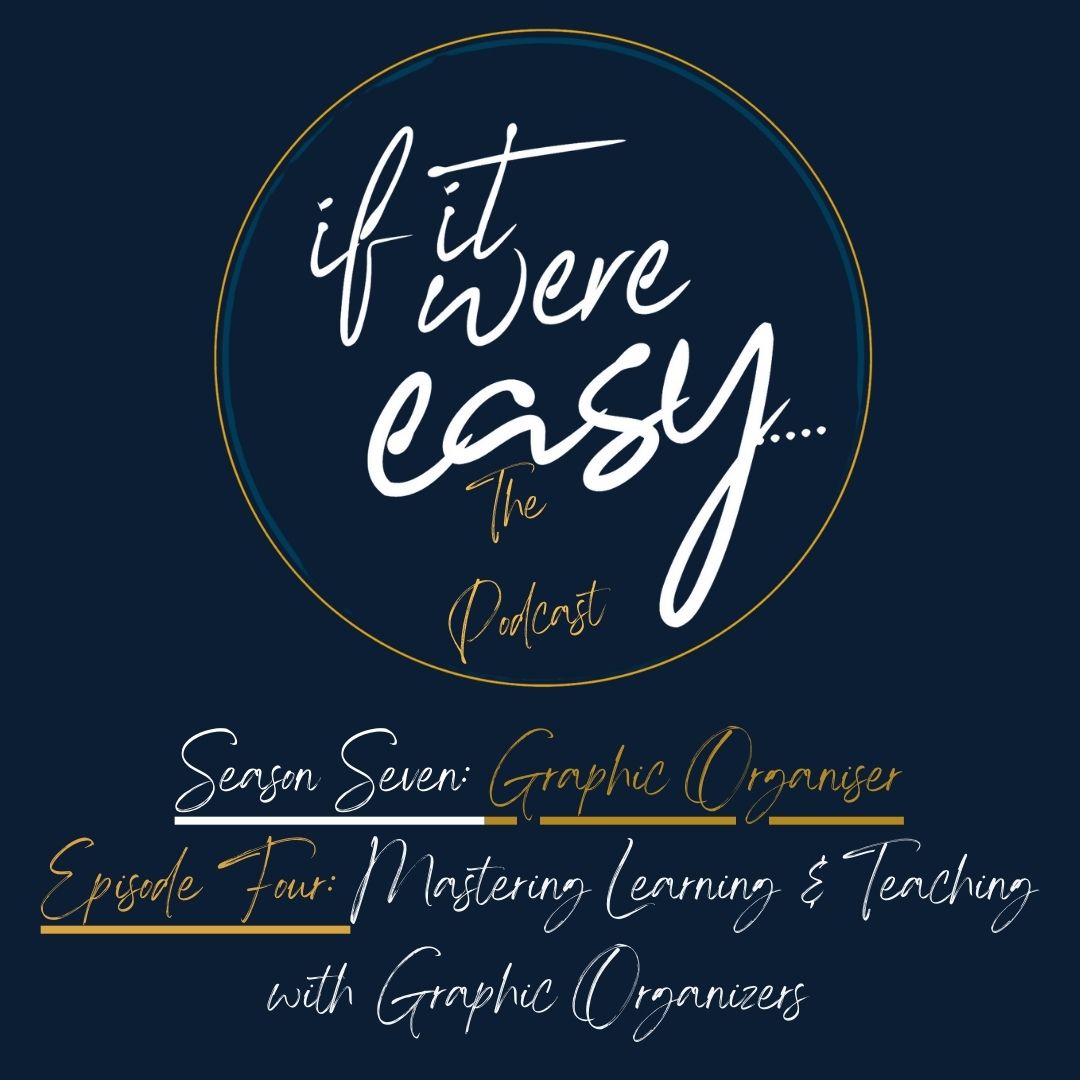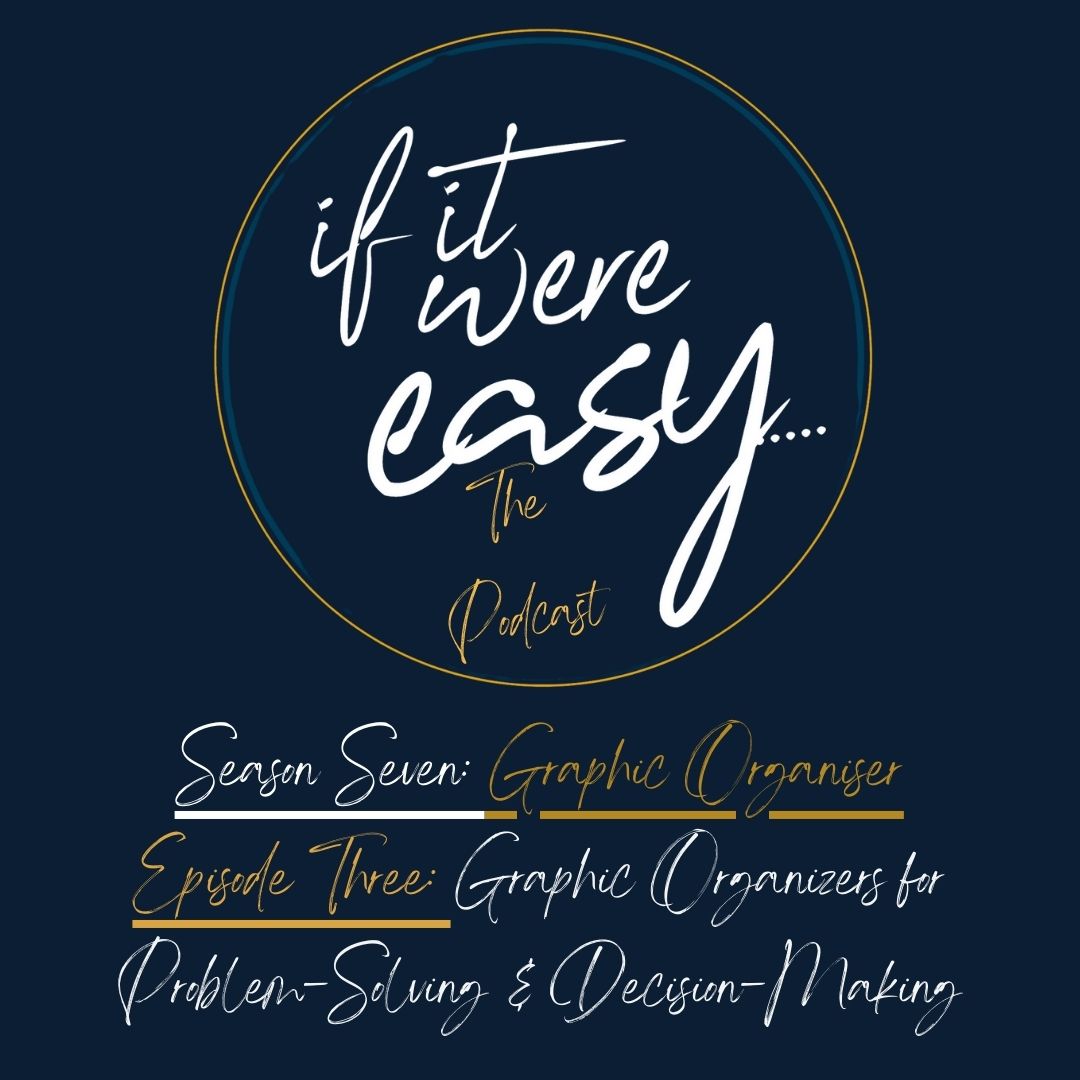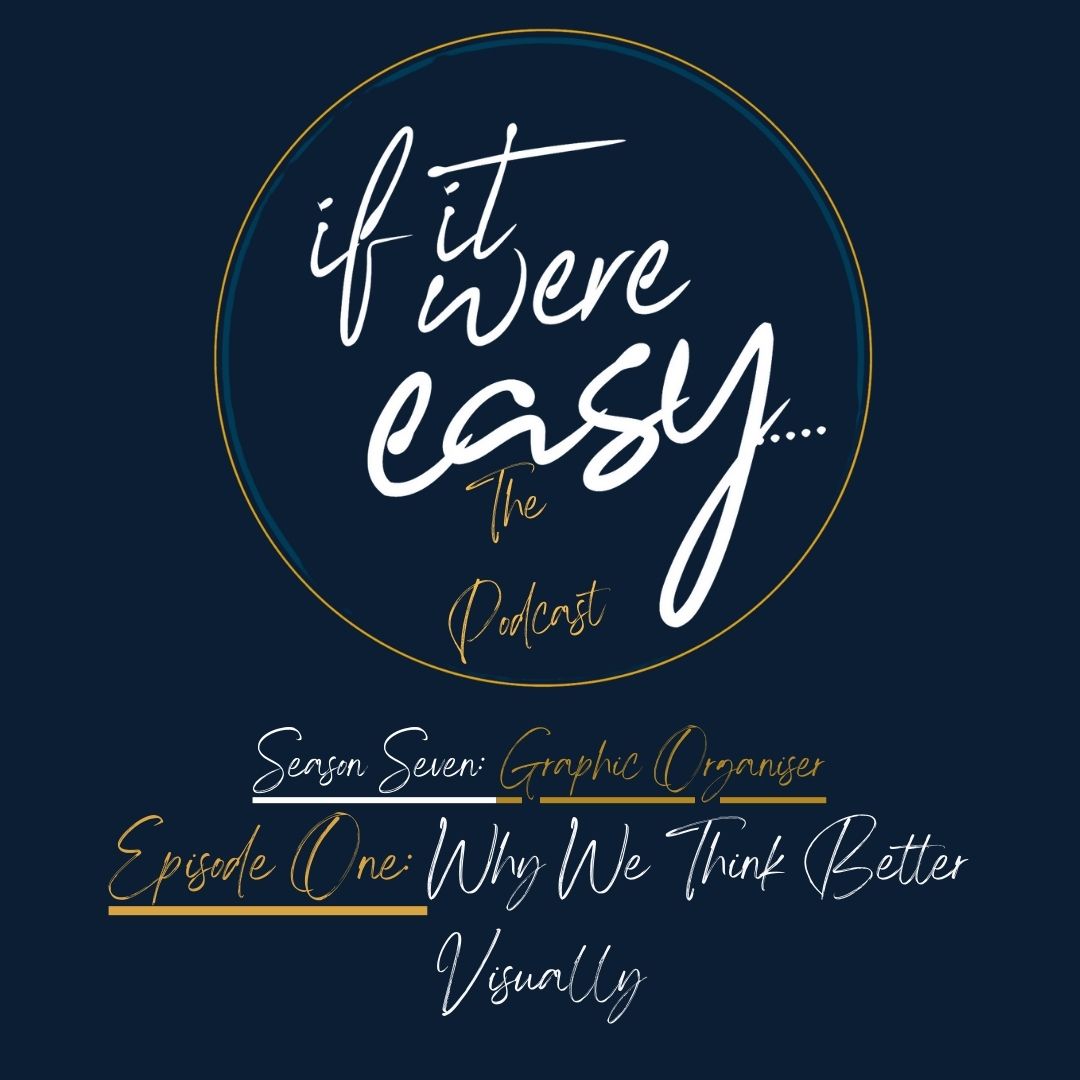Episode 4
Episode Overview
In this episode of If It Were Easy, host Dawn Taylor tackles one of the biggest challenges educators, students, and professionals face—structuring ideas for clarity and impact. Many rely on traditional note-taking and bullet points, but these methods don’t always show connections, relationships, or the big picture.
This episode explores how structured visual thinking can improve comprehension, retention, and decision-making, and why tools like T-Charts, Flowcharts, and Venn Diagrams provide a clearer, more structured way to process and apply information.
By the end of the episode, you’ll have a practical toolkit to help you organize information more effectively, whether in the classroom, workplace, or personal learning.
Key Topics Covered in This Episode
- Why bullet points and linear notes often fail to provide clarity
- How structured visual tools help make information easier to process and recall
- The benefits of T-Charts, Flowcharts, and Venn Diagrams in different learning and professional contexts
- How students, educators, and professionals can use visual tools to streamline thinking, planning, and communication
Key Takeaways
T-Charts – Comparing and Contrasting Ideas
T-Charts allow for quick side-by-side comparisons of two ideas, such as pros vs. cons, before vs. after, or fact vs. opinion. This tool is especially useful in:
- Science: Comparing renewable vs. nonrenewable energy sources
- History: Analyzing different perspectives on a historical event
- English: Evaluating character traits or theme contrasts in literature
Flowcharts – Breaking Down Complex Processes
Flowcharts provide a step-by-step breakdown of processes, making them ideal for:
- Math: Showing the sequence of solving an equation
- Science: Mapping out the scientific method or lab procedures
- Business: Improving workplace efficiency through clear workflows
Venn Diagrams – Identifying Overlaps and Differences
Venn Diagrams are great for sorting similarities and differences between concepts, helping students see relationships between ideas. Common applications include:
- English: Comparing two novels, characters, or themes
- Business: Evaluating two competing strategies or marketing approaches
- History: Understanding similarities and differences between historical events
Applying These Tools in Teaching and Learning
For Educators:
Teachers can use these graphic organizers to help students structure their understanding rather than passively take notes. They allow students to engage more deeply with content while making comparisons, organizing sequences, and breaking down complex concepts.
For Students:
Students can use these tools for studying, writing essays, and structuring arguments. Instead of memorizing isolated facts, they can visually connect ideas, making studying more efficient and meaningful.
For Professionals:
Structured visuals help professionals organize presentations, make data-driven decisions, and streamline problem-solving. Flowcharts can make processes clearer, while T-Charts and Venn Diagrams help compare options for better strategic decision-making.
Challenge of the Week
Try It Yourself:
This week, take a messy set of notes or an unstructured lesson and turn it into a structured format using a T-Chart, Flowchart, or Venn Diagram.
Reflection Question:
Did this approach make the information clearer? How did it improve your ability to analyze and retain key ideas?
Join the discussion at www.ifitwereeasy.org.
Additional Resources
- Blog Series: www.ifitwereeasy.org/blog
- Downloadable Graphic Organizer Templates and Guides: www.ifitwereasy.org/resources
- Graphic Organizers Course: www.ifitwereeasy.org/course
Stay Connected
Join the conversation on Facebook, Twitter, Instagram, and YouTube. Search “If It Were Easy” to connect with fellow educators and learners.
Subscribe and Review
If you found this episode helpful, subscribe and leave a review. Your feedback helps us continue to provide practical, actionable strategies to improve teaching and learning.
Next Episode Preview
In the next episode, we’ll explore how graphic organizers can improve problem-solving and critical thinking skills. We’ll break down tools like Cause & Effect Diagrams, Decision Trees, and more to help students and professionals make better decisions.
Thank you for tuning in, and we’ll see you in the next episode.




